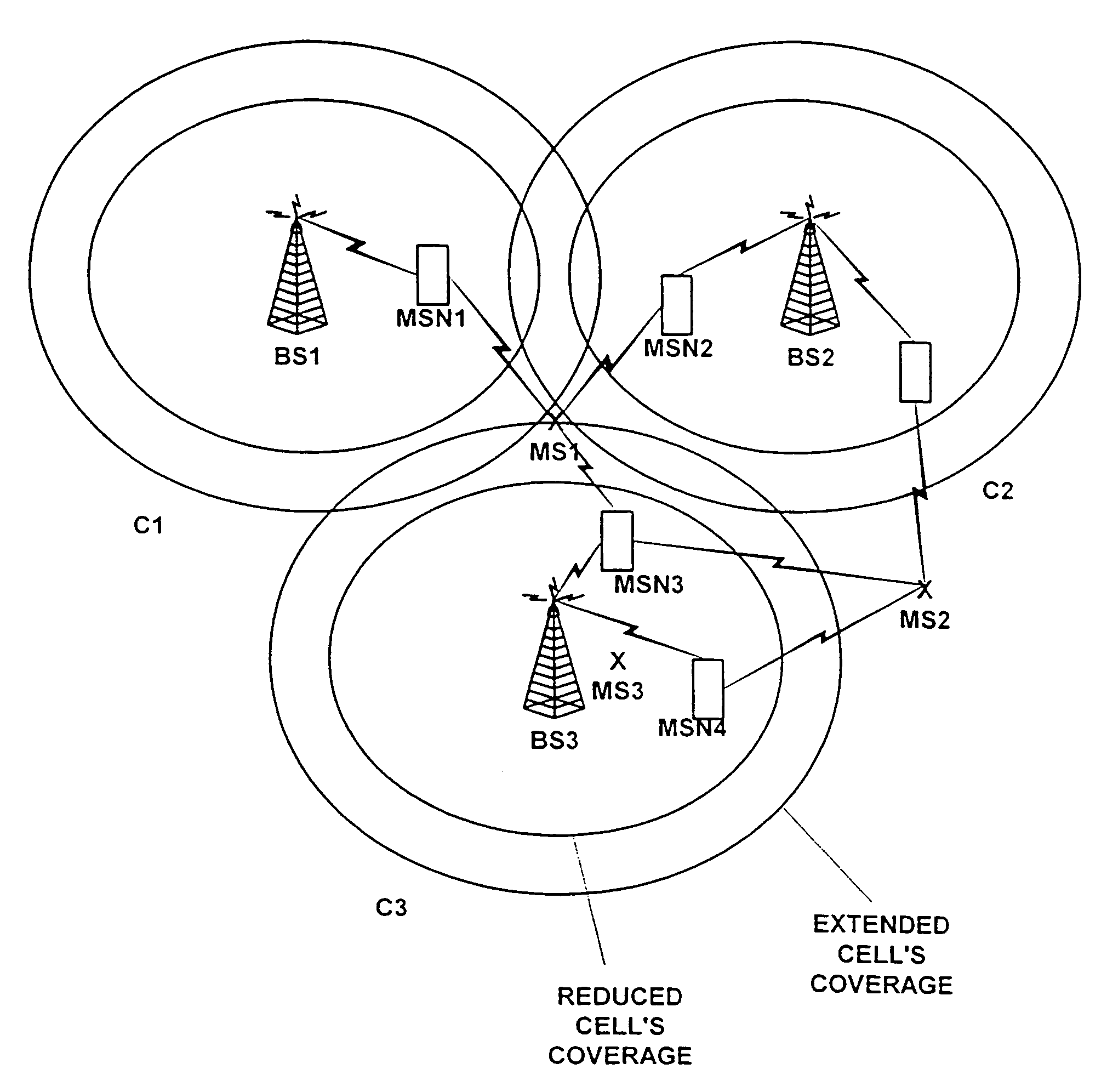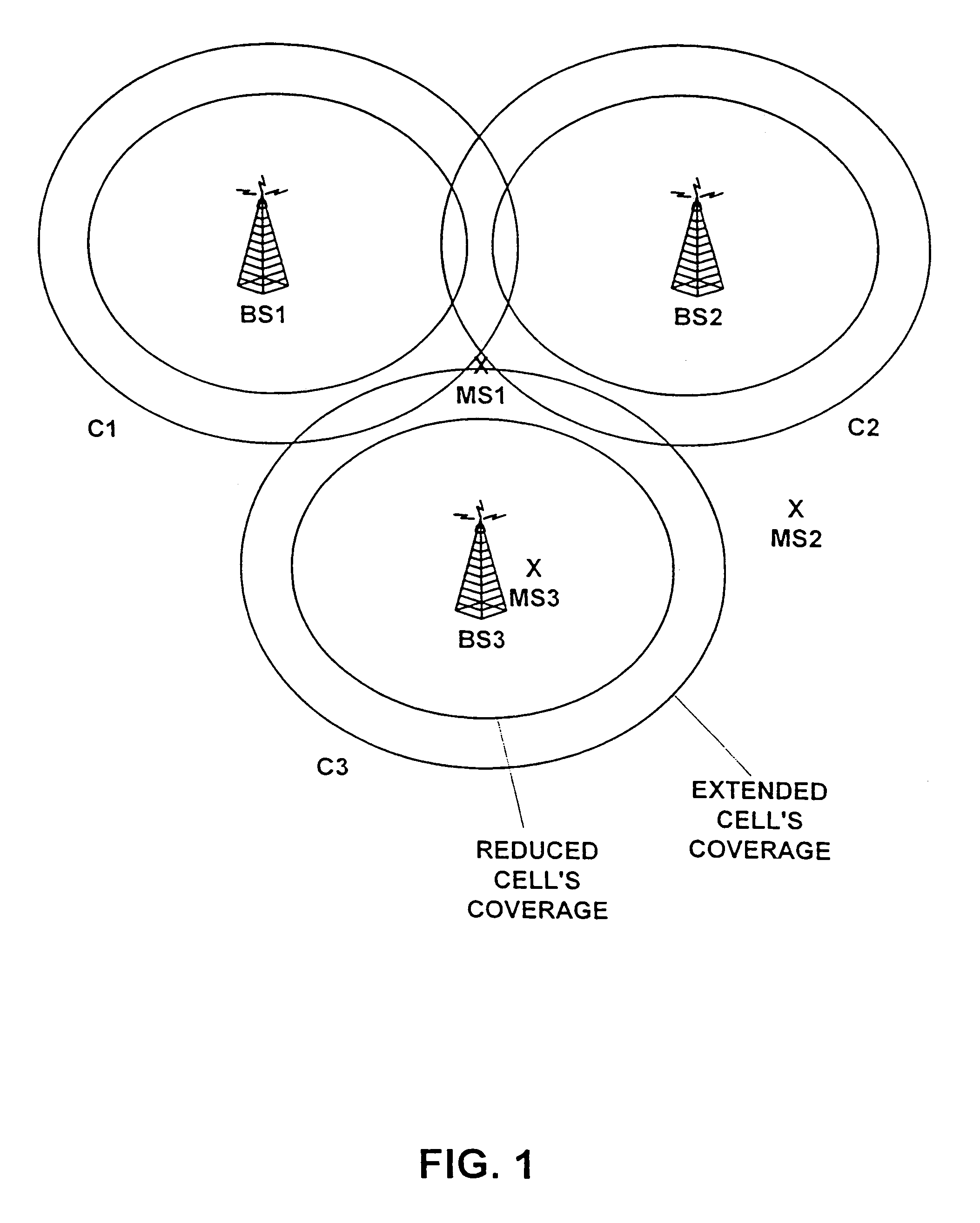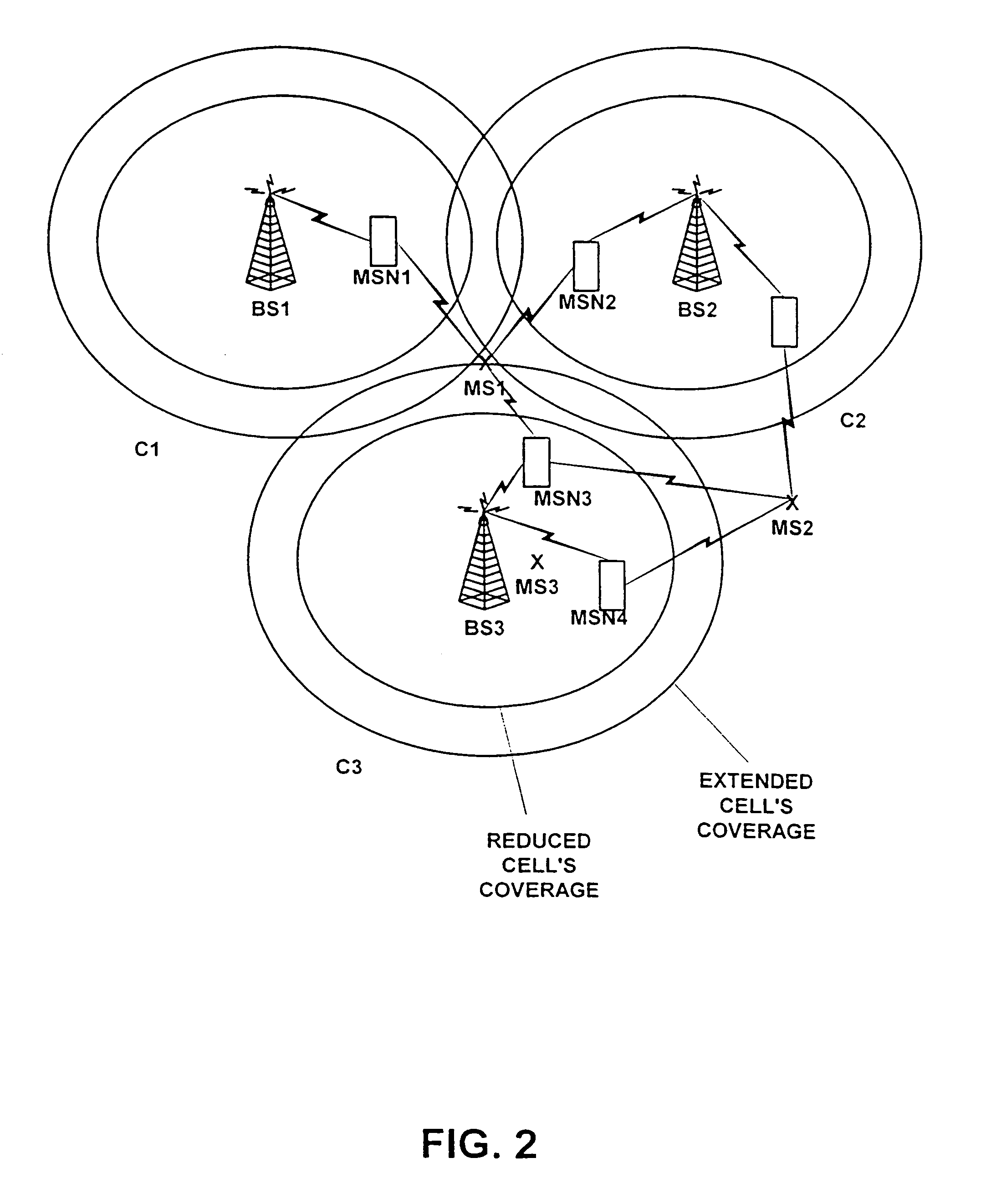Method for positioning a mobile station
a mobile station and positioning technology, applied in direction finders, transmission monitoring, instruments, etc., can solve the problems of not always available, difficult to receive signals with satisfied sir (signal to interference ratio) level from other base stations, and the dynamic range of coverage availability. the effect of reducing interference due to the positioning process
- Summary
- Abstract
- Description
- Claims
- Application Information
AI Technical Summary
Benefits of technology
Problems solved by technology
Method used
Image
Examples
Embodiment Construction
[0026]In the following, a preferred embodiment of the invention is described in more detail with reference to the accompanying drawings.
[0027]The most important characteristic of the invention is to use the cellular relay technique like Opportunity Driven Multiple Access (ODMA) to deal with the previously mentioned problems and at the same time to minimize the capacity reduction of the system due to mobile positioning service.
[0028]ODMA is a mechanism for maximizing the potential for effective communication. This is achieved by distributing intelligence within communicating nodes and providing multiple communication paths between them. The intelligent nodes measure and evaluate their communications options and adapt to exploit the optimum opportunity. The WCDMA is sufficiently flexible to support relaying with negligible increase to the MS complexity or cost. WCDMA can therefore offer the flexibility of simple relaying but also provide a suitable platform for advanced relay protocol...
PUM
 Login to View More
Login to View More Abstract
Description
Claims
Application Information
 Login to View More
Login to View More - R&D
- Intellectual Property
- Life Sciences
- Materials
- Tech Scout
- Unparalleled Data Quality
- Higher Quality Content
- 60% Fewer Hallucinations
Browse by: Latest US Patents, China's latest patents, Technical Efficacy Thesaurus, Application Domain, Technology Topic, Popular Technical Reports.
© 2025 PatSnap. All rights reserved.Legal|Privacy policy|Modern Slavery Act Transparency Statement|Sitemap|About US| Contact US: help@patsnap.com



